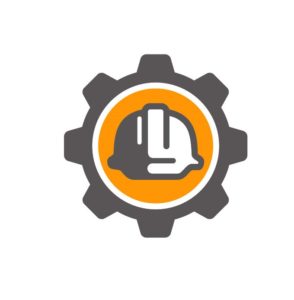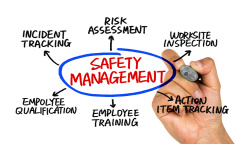
Health and Safety Management System
There are always two and sometimes three HSMSs in play on a project.
- Owner
- Prime Contractor (May also be the Owner)
- Subcontractors (Multiple)
Rarely are these systems built the same way and each has a different outlook regarding the management of the project’s health and safety.
Owner
If there is an owner that has appointed a prime contractor on site, the owner’s HSMS will only be looking for the Prime’s compliance with the HSMP that it developed. Their role in the overall day to day will be that of monitoring and review, not directing. Usually there won’t be H&S personnel on site unless there is an audit or project tour.
Prime Contractor
The prime contractor role will include the development and administration of the PSSP that serves as a project specific guideline that must be adhered to by all subcontractors on the project. The prime contractor will direct the execution of the work and will have an HSE team onsite daily for monitoring and reporting purposes.
Subcontractor
The subcontractors will supply labor and equipment on the project, all running under their own company H&S program, with project specific (PSSP) requirements added. These are items such as project orientations, equipment and environmental compliance requirements, or procedural adaptations. The subcontractor may or may not have full time H&S representatives on site, depending on the size and scope of work.
This hierarchy places the prime contractor in a position of guiding and ensuring compliance by the subcontractors to meet the expectations laid out primarily in the PSSP, but also for reporting up to the owner HSMP.
Through the process of pre-qualification between prime contractors and subcontractors, the prime attempts to determine the maturity of the subcontractor’s H&S program and the extent that they will have to assist them to achieve and maintain an acceptable level on the project. Subcontractors must be aware that their internal H&S program, which has been audited to COR certification standards, will be added to and that new project specific requirements that are introduced must be adhered to.
 This often leads to confusion for the workers if not introduced properly. Workers are going to be instructed to change procedures, perform additional tasks and work differently due to procedures laid out in the PSSP and HSMP, all while working under their individual company program requirements, that must be maintained in order to meet COR obligations.
This often leads to confusion for the workers if not introduced properly. Workers are going to be instructed to change procedures, perform additional tasks and work differently due to procedures laid out in the PSSP and HSMP, all while working under their individual company program requirements, that must be maintained in order to meet COR obligations.
Each subcontractor’s H&S program will have to be altered to comply with PSSP mandated items, reviewed with the crewmembers and signed off on. The adoption of “new and improved” items into an H&S program should be expected, but caution should be taken, unless thoroughly reviewed, before accepting.
Ask whether the new condition is workable, will it add additional risk or if it’s even applicable to your operations. I’ve seen blanket rules placed in an owner’s HSMP, accepted by the prime contractor in their PSSP and handed over to the subcontractors to implement, which added a huge amount of risk to one type of subcontractor, while not affecting the others at all. Make sure to take the time to review the PSSP before agreeing to implement all of its conditions, otherwise your crews may find themselves facing additional risk, penalty, or injury.
One of the biggest challenges faced by H&S management teams on a project is that the operations management is constantly adapting to changing schedules, materials, and manpower to maintain progress. H&S must be allowed to participate in the overall planning throughout the duration of the project, so that they can advise both the operations departments and the subcontractors of additional hazards and the required controls. The HSMS of the contractor must always be adaptable to absorb these changes brought on by development, revision and reporting requirements.
Companies must design their HSMSs to be adaptable to individual projects while still maintaining the ongoing requirements that need to be addressed of simply being in business. Third party reporting such as ISNet, Avetta, and Complyworks requirements must be met to be considered for other projects and must run in parallel with any current project changes.
Internal H&S workflows must provide information that is required by numerous stakeholders, in various formats and at various times, so make sure that the HSMS can provide these points and you’ll be able to handle requests relatively easily, by responding only to the criteria of Who needs it/What numbers they want/When they want it.


0 Comments